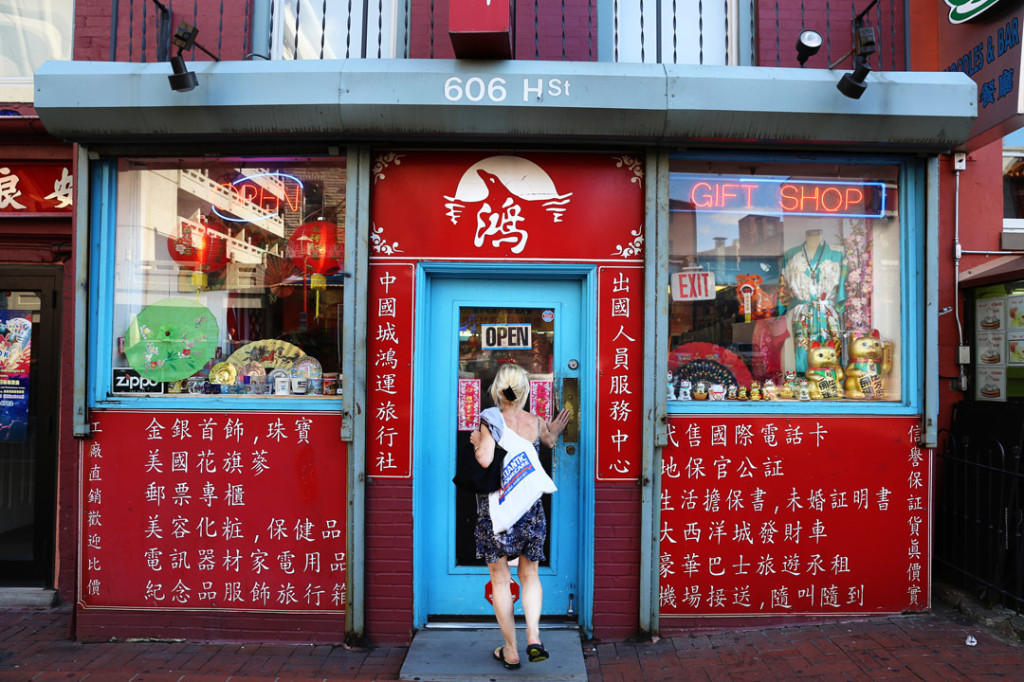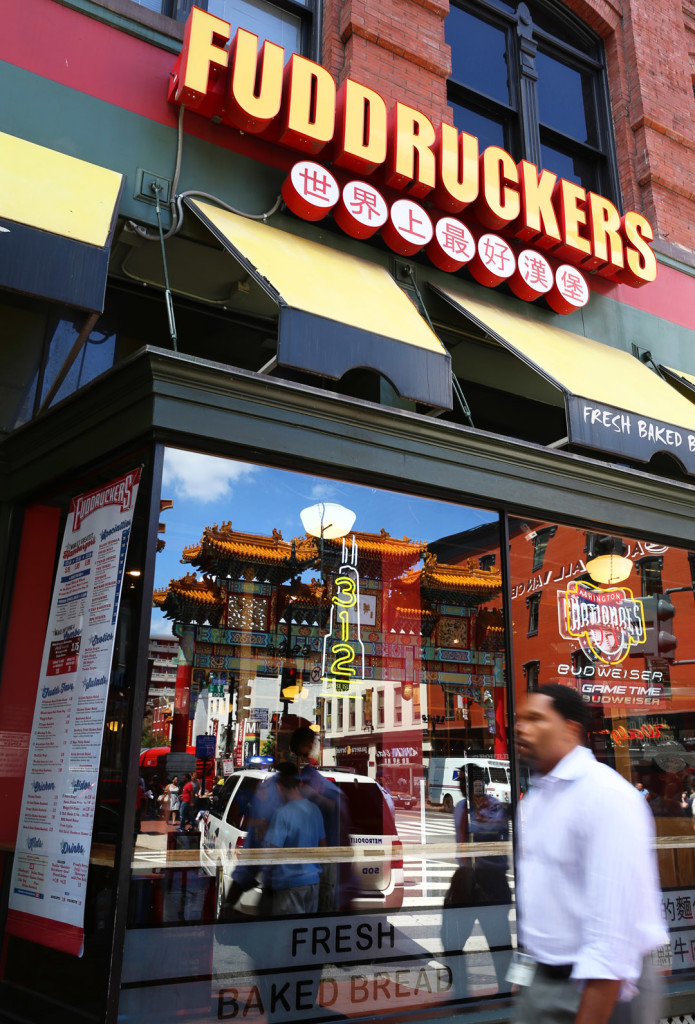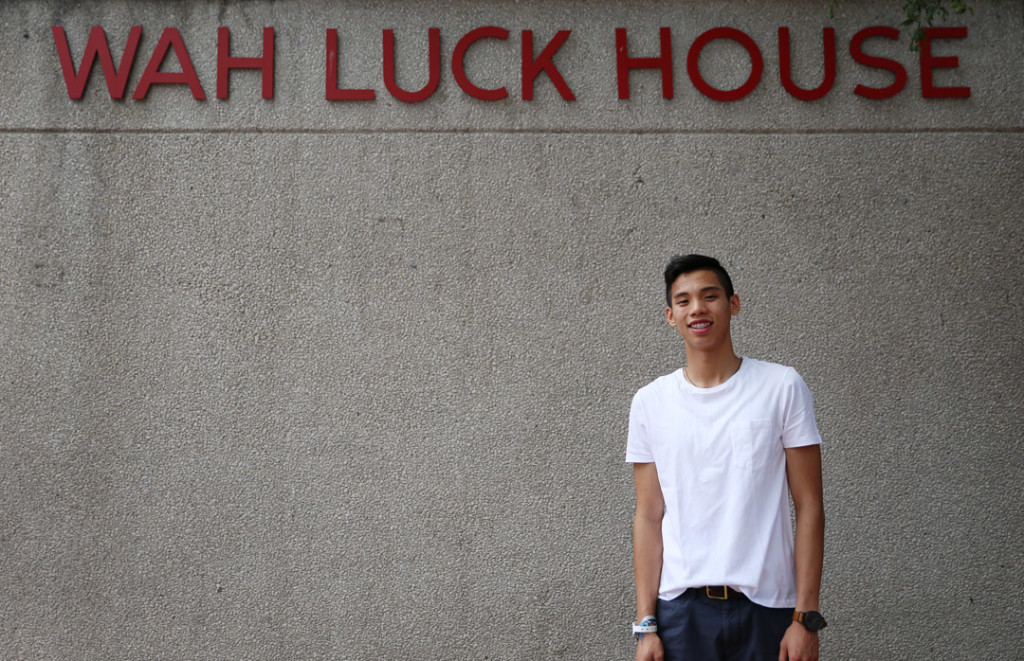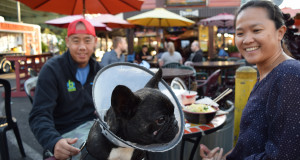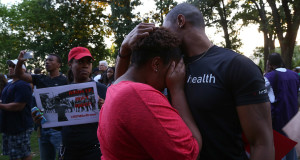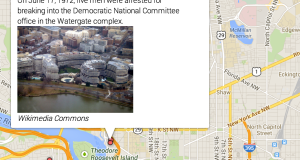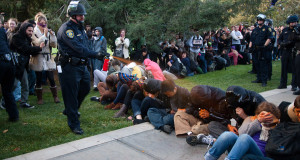Gentrification and big business are a part of D.C. neighborhood
New visitors to Washington, D.C.’s Chinatown may wonder if they are in Chinatown. Is this Chinatown? On one corner is a Fuddruckers, then there’s Walgreens and not far away an Urban Outfitters.
The nation’s capital is one of the most diverse and international cities in the world. It is home to politicians and diplomats, and about 16.2 million tourists visit annually. Like many big American cities, it has a Chinatown. In Washington, Chinatown occupies the blocks between H and F streets and Fifth and Seventh streets.
About 80 years ago, Chinatown was a landscape of dim sum restaurants, open-air markets, family-owned businesses, civic associations and Chinese immigrants. However, since the 1970s, its facade has evolved to one of chain restaurants and stores.
Chinatown’s gentrification continues. In recent years, the Chinese population has continued to relocate to the suburbs of Maryland and Northern Virginia. For example, there is a burgeoning Shanghainese community in Rockville, Md.
The result of a changing neighborhood includes rising values of nearby properties, challenging the affordability of the homes of long-time residents. There is also the perennial question of whether the heart and soul of the original Chinatown exists, or whether attempts to make the area more traditional are perhaps inauthentic.
For some, Washington’s Chinatown is a watered-down version of what it’s supposed to be. “D.C.’s Chinatown will never be an authentic Chinatown,” says Easten Law, a professorial lecturer of intercultural studies at American University. The Maryland native fondly remembers paying regular visits as a child to his grandparents who lived in Chinatown.
In Chinatown, signs in Chinese characters are part of building project reviews. “There’s no sense in making it artificial,” Law says.
As for the rising housing costs, residents say that is unavoidable. Ted Gong, one of two organizers of Chinatown Talk Story, a series of monthly discussions about the Asian Pacific American community, says he’s sympathetic to the fight for affordable housing in the area. However, he said he thinks it doesn’t solve the issue of gentrification.
“Urban centers, they grow and develop,” Gong says.
Still, some Chinese residents are fighting to remain in their homes.
The Wah Luck House apartment, where Law’s grandparents lived, is a federally subsidized building that houses mainly elderly Chinese immigrants. About a 15-minute walk from Wah Luck, the Museum Square Apartment complex in the Mount Vernon Square neighborhood also houses many elderly Chinese, according to Zenobia Lai, executive director of Asian Pacific American Legal Resource Center.
Both buildings are designated as Section 8 housing, a federal rental assistance program. Residents pay 30 percent of their income toward rent and the government covers the rest, Lai says. Without the federal subsidy, many residents would not be able to afford to live there and would be forced to relocate.
Until two weeks ago, Museum Square resident Mei Zhen Zhu was worried the owner of the building would not renew the Section 8 contract, set to expire this October. At a resident meeting Wednesday, she learned the owner would not opt out of the contract. However, the owner still plans to sell the apartment building for $250 million.
“Right now, nobody really has a plan,” Zhu, 52, says in Cantonese through an interpreter about plans to relocate if the subsidy contract ends or if the building is sold. “Each individual will figure it out when it comes, though it would be very difficult.”
Gong says he believes the preservation of Chinatown doesn’t necessarily rely on preserving buildings or things.
“The power of the community relies on stories,” he says. Gong and fellow Talk Story organizer Stan Lou are working on an oral history project of Chinatown residents. “It’s about the histories that are remembered and shared.”
Follow @MelanieBalakit on Twitter.
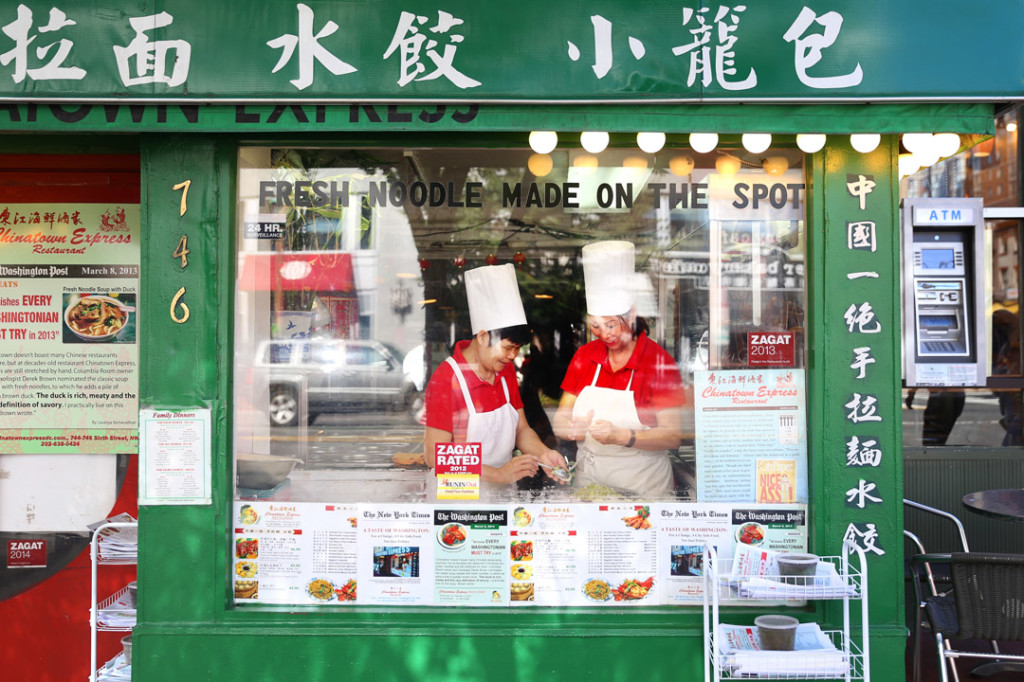
Two women make dumplings in China Express’s window on Wednesday, August 13, 2014. (Brian Nguyen/AAJA VOICES)
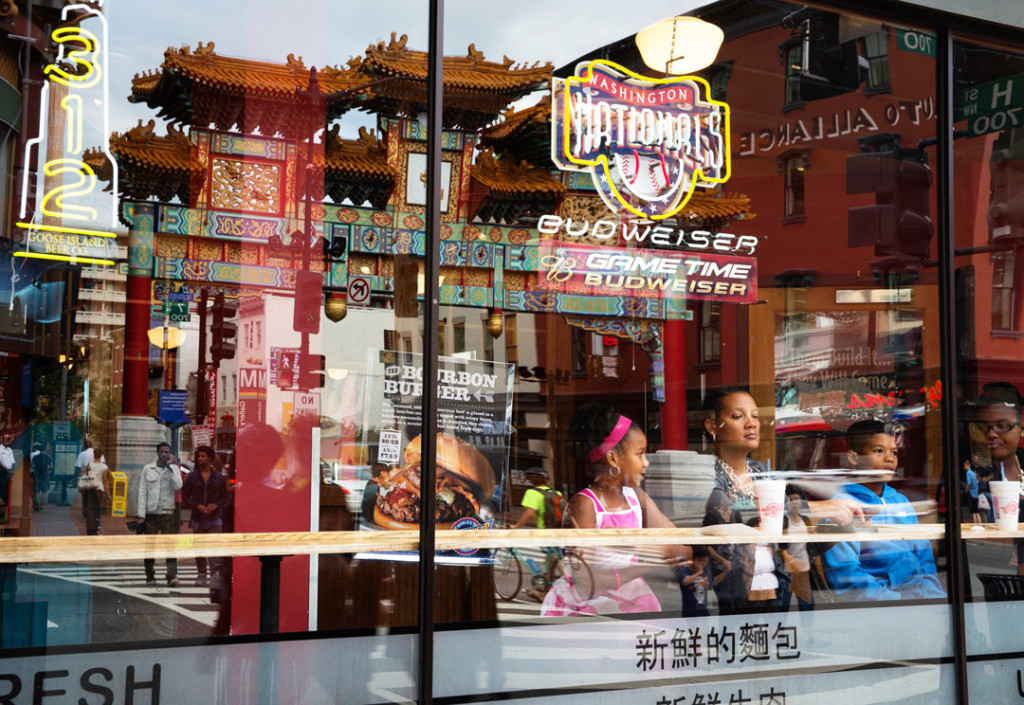
The gate to Chinatown is reflected on Fuddrucker’s windows on Tuesday, August 12, 2014. Washington DC’s Chinatown has been increasingly gentrified as property costs rise and big chains move in. (Brian Nguyen/AAJA VOICES)
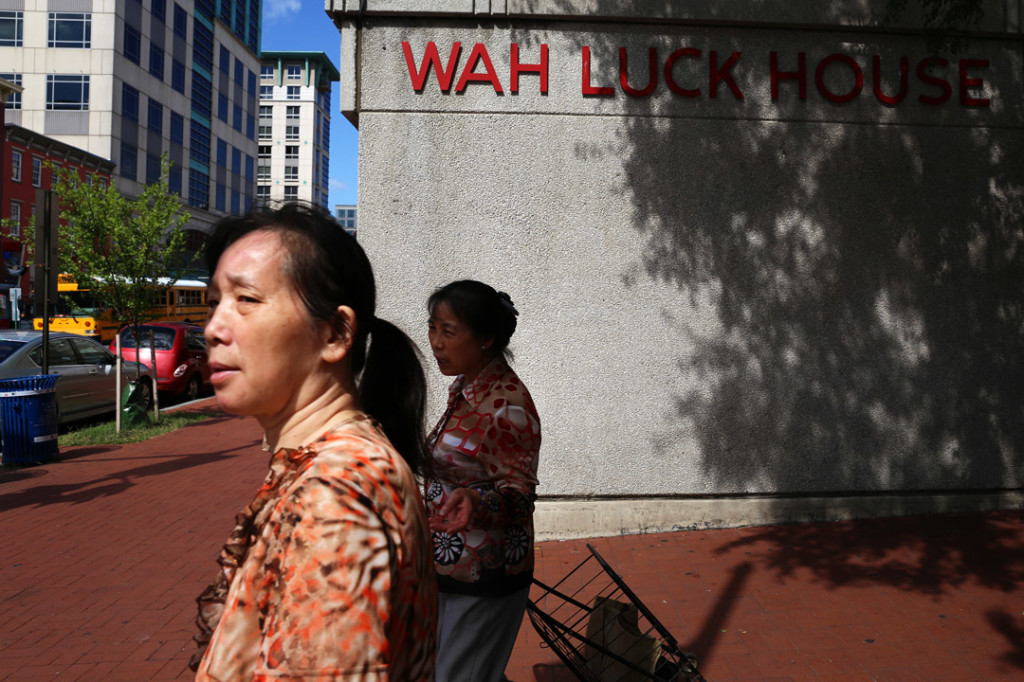
Two women walk past the Wah Luck House on Wednesday, August 13, 2014. The Wah Luck House apartments is home for a large number of elderly Chinese residents. Their lease is up for renewal in 2015 and may be sold for development. (Brian Nguyen/AAJA VOICES)
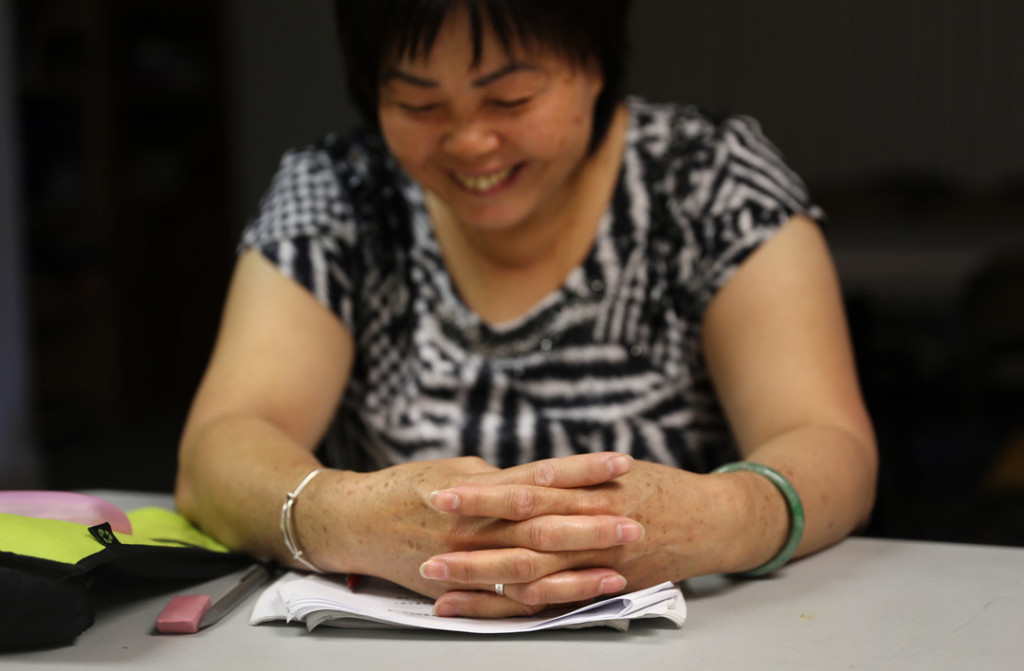
Mei Zhen Zhu, 52, on Wednesday, August 13, 2014. Zhu lives in 401 K street at Museum Sqaure which will be evicting all of its residents in four months. The residents are working with a lawyer to fight the eviction. (Brian Nguyen/AAJA VOICES)
 VOICES Publishing from the AAJA National Convention
VOICES Publishing from the AAJA National Convention


